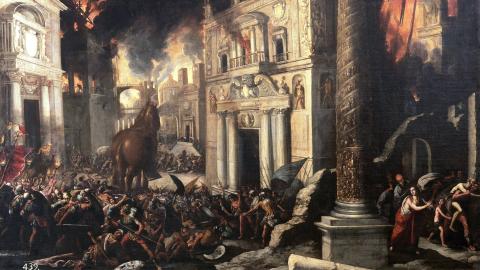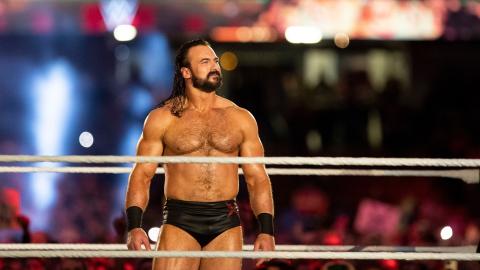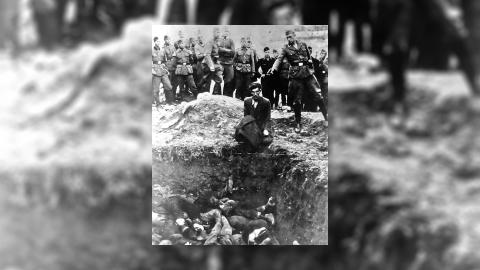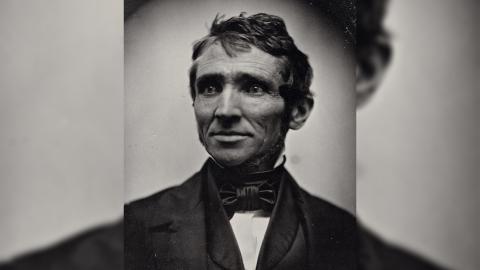The Cadbury Family: Biography
John Cadbury hoped chocolate would tempt us away from the demon drink. And the famous family company he created cared as much for its people as its profits.
John Cadbury is born into a wealthy, Quaker practicing, anti-slavery campaigning family in August 1801. After Quaker school, he works in a Leeds tea shop. In 1824, his father lends him the money to open a one man grocery business next door to the family house in Birmingham. Two years later, aged 24, he marries. Two years after they marry, his wife dies. John finds some solace in his shop and his brother joins the business.
One of the luxury items they sell is drinking chocolate. John prepares it by hand by using a pestle and mortar. The laborious production and the high tax on imported cocoa beans means only the rich can afford to drink chocolate. But John hopes his tea, coffee and chocolate will one day provide a mass alternative to alcohol, a substance he believes keeps many in poverty. Like his father, John has a strong sense of social injustice. In particular he campaigns against child exploitation as chimney sweeps and animal cruelty. But in order for his business to tempt the masses away from alcohol, his chocolate needs to be mass produced.
THE SWEET SEAL OF SUCCESS
And so, in 1831, John expands to a four storey warehouse in Crooked Lane and starts commercially producing a range of drinking chocolates and cocoas. The following year he marries his second wife. They have seven children. Two of them, Richard and George will inherit the business. By 1842, John is selling 16 varieties of drinking chocolate and 11 different cocoas.
In 1847, the Cadbury brothers' booming business moves into a new, larger factory that’s more central and is connected to the canal. They now have access to all major British ports. They’re fortunate that the taxes that make cocoa so expensive are cut and so their main product becomes more affordable. And in 1854 Queen Victoria gives them their first Royal Warrant. Cadburys now have Royal brand approval.
But, on the verge of realising his vision, John’s second wife dies. Her death in 1855 drives him into a deep depression. In 1860 the Cadbury’s dissolve their partnership and a demoralised John hands over his deteriorating business to his two sons, Richard and George. John will dedicate the rest of his life to civic and social work till his death in 1889.
THE NEXT GENERATION
The plan is for the artistic Richard to concentrate on sales as the robust George focuses on the manufacturing side. But the brothers, both in their early 20s, face almost daily bankruptcy. The next five years see them both consider quitting the family business. They endure long hours, lack of sleep and small profits. But instead of giving up, they each plough the equivalent of £600,000 into the business. It’s time for a new generation of Cadbury brothers to take chocolate forward.
ABSOLUTELY PURE
In 1866, they invest in refining the cocoa to an essence ending the need for any adulteration. And it’s just in time to take advantage of the new middle class obsession with the chemicals in their food. The 1872 and 1875 Adulteration of Food Acts essentially gives free publicity to the Cadburys. They supplement this with an ad campaign based on the slogan ‘Absolutely Pure. Therefore Best’.
Their small business becomes a big enough brand to break the monopoly the French had previously exerted on the British market. Richard makes the first British made chocolate boxes. He artistically adorns them with designs that will come to epitomise the Victorian/Edwardian era. They make their first Cadbury Easter Egg in 1875 (the ubiquitous cream one isn’t invented till 1971).
BOURNVILLE
By 1879, the brothers need to expand and so move to a small village a four miles south of Birmingham. Factories at the time are oppressive, dark and sometimes even fatal places to work: The Cadbury’s want to build something better. On the 14 acre site, they start to build Bourneville.
Their factory has warm rooms to dry clothes and places to heat food. In 1893, they start buying land around the factory to build a worker’s village. Each house has a garden big enough to grow vegetables. George provides football and cricket fields for the men and boys and a playground and a garden with a lily pond for their wives and daughters. George’s wife helps plan a ‘Garden City’ for their workers. In 1895, 143 cottages are built on 140 acres. Good wages, medical treatment and even pension plans make Cadbury’s employee extremely exceptional.
In 1899, Richard dies unexpectedly. But by the time of his death the Cadbury factory has trebled in size and now has 2,600 employees. The company becomes the Cadbury Brothers Limited and a new younger generation bring the latest business ideas from analytical laboratories to assembly lines. But no matter the innovations, George is his father’s son. He continues to plough his profits into social causes like pension reform and to pursue his pacifist philosophy against the Boer War.
The Cadburys had helped take on and break the French chocolate monopoly in the 19th Century. Now, in the 20th Century, with their highly motivated workforce, they would take on and compete against the Swiss milk chocolate manufacturers. In 1915, they produce Milk Tray, a chocolate collection affordable enough to be an everyday treat.
And it’s not till 1943 that the first non family directors are appointed to the company. Its 1969 merger with Schweppes takes the former one man, one shop name, and makes it into a global brand.
















